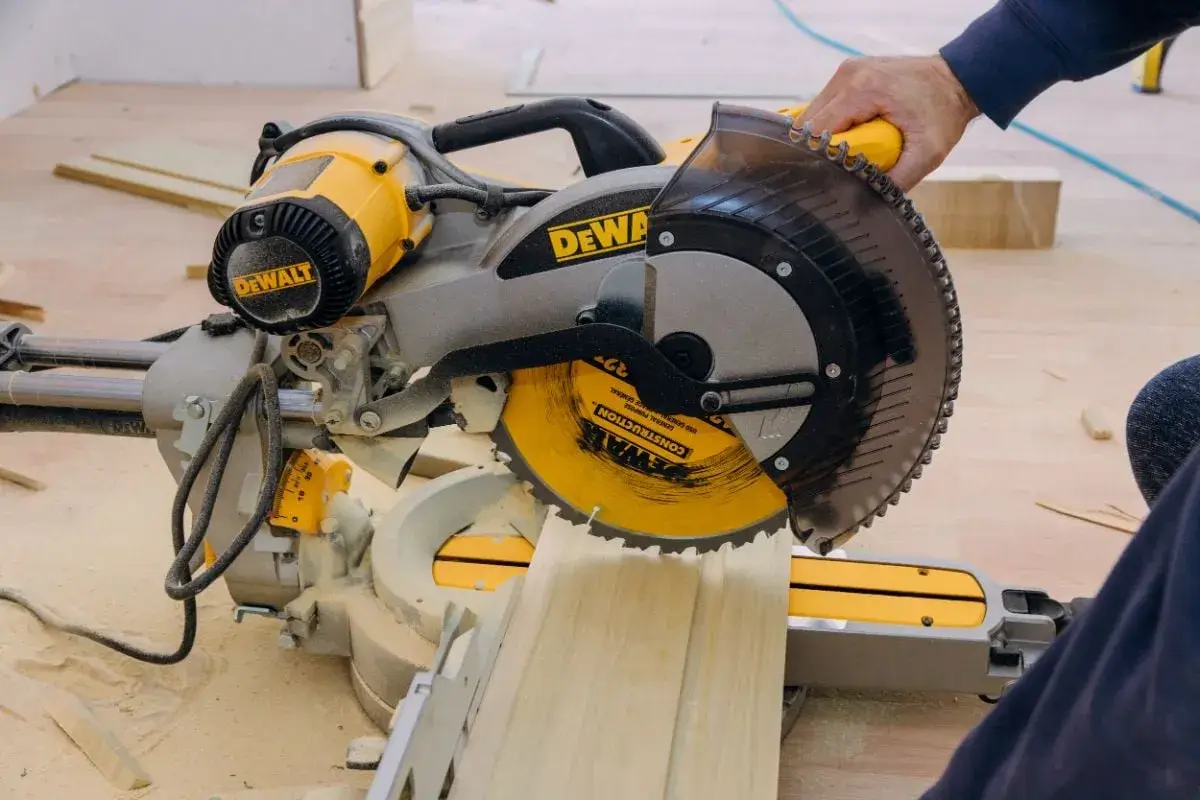A sliding mitre saw is a power tool that can make precise crosscuts and angled cuts on wood, metal, plastic, and other materials. It consists of a circular saw blade mounted on a sliding arm that can move back and forth along a rail. A sliding mitre saw can also tilt and rotate to adjust the angle of the cut.
The main advantage of a sliding mitre saw is that it can cut wider and thicker materials than a regular mitre saw. The sliding arm allows the blade to extend beyond the base of the saw, increasing the cutting capacity. A sliding mitre saw can also make longer cuts in a single pass, reducing the need to flip or reposition the workpiece.
However, a sliding mitre saw also has some disadvantages that should be considered before buying one. The main disadvantage of a sliding mitre saw is that it is more expensive and bulky than a regular mitre saw. A sliding mitre saw requires more space to operate, as the sliding arm needs room to move back and forth. A sliding mitre saw also has more moving parts and mechanisms that can wear out or break over time, requiring more maintenance and repairs.
How to Choose a Sliding Mitre Saw?
If you decide that a sliding mitre saw is the right tool for your projects, there are some factors that you should look for when choosing one. Here are some of the most important ones:
Blade size: The blade size determines the maximum cutting capacity of the saw. The most common blade sizes are 10 inches and 12 inches, but there are also smaller and larger options available. Generally, the larger the blade, the more expensive and heavy the saw will be.
Motor power: The motor power affects the speed and smoothness of the cut. The more powerful the motor, the faster and cleaner the cut will be. However, a more powerful motor also consumes more electricity and generates more noise and heat. The motor power is usually measured in amps, watts, or horsepower.
Sliding mechanism: The sliding mechanism controls the movement of the arm and the blade. There are different types of sliding mechanisms, such as single-rail, dual-rail, or glide systems. Each one has its own pros and cons, such as stability, accuracy, smoothness, and durability. You should test the sliding mechanism before buying the saw and make sure it feels comfortable and easy to use.
Mitre and bevel angles: The mitre and bevel angles determine the range of cuts that the saw can make. The mitre angle is the horizontal angle of the cut, while the bevel angle is the vertical angle of the cut. Most sliding mitre saws can make mitre cuts up to 45 degrees on both sides and bevel cuts up to 45 degrees on one side. Some models can also make double bevel cuts, which means they can tilt both ways. You should choose a sliding mitre saw that can make the angles that you need for your projects.
Features and accessories: The features and accessories of the sliding mitre saw can enhance its performance and convenience. Some of the common features and accessories are:
Laser guide: A laser guide projects a red line on the workpiece, showing where the blade will cut. This can help you align the cut more accurately and easily.
Dust collection: A dust collection system collects the dust and debris that are produced by the saw, keeping the work area clean and preventing health hazards. Some models have a built-in dust bag, while others have a port that can be connected to a vacuum or a dust extractor.
Extension wings: Extension wings are attachments that extend the base of the saw, providing more support and stability for longer or wider workpieces. They can also have built-in fences, stops, or clamps to hold the workpiece in place.
Digital display: A digital display shows the exact angle of the cut, making it easier to adjust and monitor the settings. Some models also have a memory function that can store and recall the most frequently used angles.
Conclusion
A sliding mitre saw is a versatile and powerful tool that can make a variety of cuts on different materials. It has the advantage of being able to cut wider and thicker materials than a regular mitre saw, but it also has the disadvantage of being more expensive and bulky. When choosing a sliding mitre saw, you should consider the blade size, motor power, sliding mechanism, mitre and bevel angles, and features and accessories that suit your needs and preferences. A sliding mitre saw can be a great addition to your workshop, as long as you use it safely and properly.

